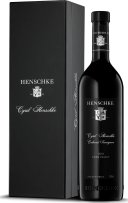$100 and over
Opus One Overture Non-Vintage
Opus One is arguably Napa's most famous winery. It was established in 1979 as a joint venture between Baron Philippe de Rothschild and Robert Mondavi. Their goal was to craft a wine that combined the intensity and fruit purity of Napa, with the elegance of top Bordeaux. Today it is one of the most iconic and revered wines made in California, and the world. Overture is the second wine of Opus One, originally created in 1993 and for many years available only at the winery. It is a multi-vintage wine, made from a blend of the five classic Bordeaux varieties and aged for 18 months in French oak. Overture is a true expression of Opus One's estate vineyards.
Chateau Latour Pauillac Premier Grand Cru Classé
Château Latour is situated in the heart of the Médoc wine region, about 50 km north-west of Bordeaux, where the legend of the vineyards of Bordeaux began. The Château’s prime terroir, l’Enclos, overlooks the Gironde Estuary which, over the centuries, has given the vineyard its geological complexity and, on a daily basis, ensures a mild climate. In the years since 1993, under the leadership of the Pinault family, the estate’s owner, significant changes have been made with a view to maintaining Château Latour’s pursuit of excellence in the wines that it produces. Dark ruby in colour with a very elegant nose with beautiful aromatic purity. Generous and powerful on the palate with a velvety mouthfeel, full of silky tannins. Brimming with energy, the finale is superbly precise with fabulous length.
Lake's Folly Red Blend
Established in 1963 by Doctor Max Lake, Lake's Folly was the first new vineyard in the Hunter Valley last century. In early 2000 Lake's Folly was purchased by Peter and Lee Fogarty and family who, along with Hunter-born and bred winemaker, Rodney Kempe, have continued to maintain the integrity and direction of this significant vineyard. There is an old saying that the wine is made in the vineyard (good fruit makes good wine). Most of the Lakes Folly Cabernet vines are now more than 50 years old. This means that over the years, the vines have ‘self-regulated’. This natural low cropping gives the grapes better consistency of flavour. The terroir, which is a rare combination of volcanic hill, alluvial creek flat and south-easterly aspect, is ideal for the production of fine wines. The vines are pruned heavily for low production high quality fruit, and trellised with vertical shoot positioning, which gives more reliable flavour even in difficult years. Maintaining a true ‘estate’ philosophy allows Lakes Folly to fully express the terroir of this particular site. Crop levels are also critical in achieving complexity. Needless to say, growing all their own fruit at the Folly enables them to be super diligent in achieving these goals, the weather having the last say on the fruit intensity for a particular year. With the old vines, low crop levels, and good canopy management, we are consistently presented with above average fruit. Throw in some traditional winemaking, French oak and you have a unique distinguished single site wine. Their two flagship wines, a Cabernet blend and a Chardonnay, are made in limited quantities and are grown, vintaged, and made on the estate. The wine styles are restrained and elegant, showing finesse and complexity. They have clarity of structure and great length of flavour. A first for Lake's Folly, this year's Red is a blend of Shiraz 47%, Merlot 34%, and Petit Verdot 19%. After harvesting the Shiraz, Merlot and Petit Verdot (and Chardonnay) grapes in 2022, they experienced very late harvest rainfall which impacted the Cabernet grapes, leading to the decision to not harvest the Cabernet (the first time on record this has happened at Lake's Folly). The finished result: a unique, unprecedented blend - a cracking wine (albeit without the usual Cabernet component), though in very limited quantities this release! The fruit is open-fermented producing softer, more subtle tannins, and then transferred to large format casks for six months for settling, and then into small French oak barriques (new, one, and two-year-old) for approximately one year before bottling.
Henschke Cyril Henschke Cabernet Sauvignon
Henschke's flagship Cabernet is named after the late Cyril Henschke who purchased the Eden Valley property in the 1960s. Stephen and Prue Henschke then established the vineyard with Cabernet Sauvignon, Merlot and Cabernet Franc vines which produces this intensely perfumed Cabernet. Matured in 100% new French oak for 18 months, this exceptional wine shows blackcurrant and cedar characters balanced with superb fine grained tannin.
Wendouree Cabernet Malbec
Bright medium red with purple hue in colour; On the nose: pronounced Blackcurrant, crushed wet leaves and dark plums, bouquet of wild violet and a decent amount of almost wet tobacco oak. A full bodied wine that has great length on the palate with firm but refined tannins. Simply outstanding in its class.
Penfolds Bin 169 Cabernet Sauvignon
Bright plum in colour, Penfolds Bin 169 Cabernet Sauvignon displays delicate notes of mint and blackcurrant, with a more savory bouquet of semi-dried tomatoes and fruit chutney at the end. A hint of oak and spice adds extra warmth. On the palate a flavour-wheel of spearmint, milo powder, chocolate and black liquorice.
Penley Estate Helios Cabernet Sauvignon
Chateau Bellevue Mondotte St. Emilion Grand Cru
Bellevue Mondotte is a small jewel of a vineyard that is perfectly located, just east of the picturesque St. Emilion village. Even though the vineyard is quite small, it is divided into 3 main parcels which are two different terroirs with half the vineyard planted in clay with limestone and the other half of the vineyard planted in pure, deep limestone. Due to drastic green harvesting and selection, this property has some of the lowest yields of any Right Bank Bordeaux wine estate. After harvesting and intense sorting at Bellevue Mondotte, vinification starts naturally in temperature-controlled, oak wood vats. This initial step is followed by a long maceration can, between five and seven weeks. Malolactic fermentation then takes place in barrels. The wine of Bellevue Mondotte is aged in 90%, new, French oak barrels for up to 24 months. During the first six months of aging, the wine remains on its fine lees. The final blend takes place just before bottling, which is done without fining or filtering. Very little Chateau Bellevue Mondotte is produced each year. In an average vintage, production hovers at close to 350 to 400 cases of wine per year. The wine is not as powerful as one might expect, given the owners and winemaking team, coming in at 15%. A sensational, rather massive example for a 2010, this opaque purple wine offers up notes of subtle barbecue smoke, blackberry and cassis as well as a hints of lead pencil shavings and a confiture of red and black fruits in the mouth. Full-bodied, unctuously textured and excruciatingly tannic, this is a big, blockbuster style of wine meant for 10-50+ years of cellaring. - Robert parker, Wine Advocate, March 2013, 95+ Points
Château Lafite Rothschild Premier Cru Classé Pauillac
In 1815, Guillaume Lawton said of Château Lafite, “I consider it to be the the most elegant and delicate, with the finest substance of the three (Premier Crus). The location of its vines is one of the finest in the Médoc”. In 1855 the Château was ranked as a Premier Grand Cru in the famous classification that was prepared for the Universal Exhibition of that year. A recurring phenomenon in recent years, the beginning of the winter was mild and dry, and it was only at the end of January that beneficial colder temperatures arrived, accompanied by rain. Bud break began in early April as usual, and the vines then grew quickly, as they had ample reserves of water and the weather was mild. In June, flowering was early and uniform, which is always a promising sign. The influence of the Atlantic ocean and the Gironde estuary helped to reduce the effect of a somewhat hot summer with high temperatures. Water stress was high, but rain in August brought the freshness required for the grapes to change colour and then to ripen perfectly. Conditions were ideal during the harvests, enabling us to obtain optimal ripeness for each plot.
Cullen Wines Flower Day Vanya Cabernet Sauvignon
Cullen Wines respectfully acknowledges the Wadandi people, past and present, traditional custodians of the land on which the wine was grown. The grapes for this wine were handpicked, sorted, and destemmed on a flower day in early March. The wines grown on these ancient soils are certified biodynamic, carbon positive, and naturally powered.




























